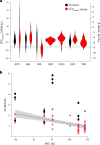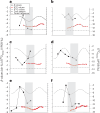Diverse prehistoric cattle husbandry strategies in the forests of Central Europe
- PMID: 39472666
- PMCID: PMC11726460
- DOI: 10.1038/s41559-024-02553-y
Diverse prehistoric cattle husbandry strategies in the forests of Central Europe
Abstract
During the sixth millennium BCE, the first farmers of Central Europe rapidly expanded across a varied mosaic of forested environments. Such environments would have offered important sources of mineral-rich animal feed and shelter, prompting the question: to what extent did early farmers exploit forests to raise their herds? Here, to resolve this, we have assembled multi-regional datasets, comprising bulk and compound-specific stable isotope values from zooarchaeological remains and pottery, and conducted cross-correlation analyses within a palaeo-environmental framework. Our findings reveal a diversity of pasturing strategies for cattle employed by early farmers, with a notable emphasis on intensive utilization of forests for grazing and seasonal foddering in some regions. This experimentation with forest-based animal feeds by early farmers would have enhanced animal fertility and milk yields for human consumption, concurrently contributing to the expansion of prehistoric farming settlements and the transformation of forest ecosystems. Our study emphasizes the intricate relationship that existed between early farmers and forested landscapes, shedding light on the adaptive dynamics that shaped humans, animals and environments in the past.
© 2024. The Author(s).
Conflict of interest statement
Competing interests: The authors state there are no competing interests.
Figures








References
-
- Bogucki, P. Animal traction and household economies in Neolithic Europe. Antiquity67, 492–503 (1993).
-
- Marciniak, A. Placing Animals in the Neolithic: Social Zooarchaeology of Prehistoric Farming Communities (Univ. College London, 2005).
-
- Bogucki, P. Forest Farmers and Stockherders. Early Agriculture and Its Consequences in North–Central Europe (Cambridge Univ. Press, 1988).
Publication types
MeSH terms
Grants and funding
- FP7-IDEAS-ERC/324202/EC | EC Seventh Framework Programm | FP7 Ideas: European Research Council (FP7-IDEAS-ERC - Specific Programme: "Ideas" Implementing the Seventh Framework Programme of the European Community for Research, Technological Development and Demonstration Activities (2007 to 2013))
- DHF/R1/180064/Royal Society
- RGF/ED/181067/Royal Society
LinkOut - more resources
Full Text Sources
Miscellaneous

